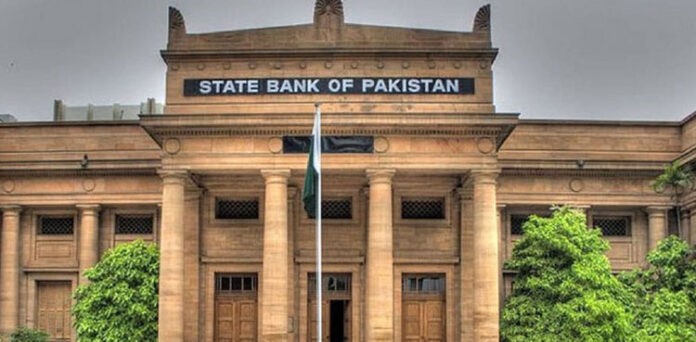Monetary Policy: SBP keeps key interest rate unchanged at 21pc
The Monetary Policy Committee had met in April last, wherein it had jacked up the key policy rate by 100 basis points to a record high of 21% to control inflation. Since January 2022, the SBP has raised rates by a total of 1,150 bps.
According to a press release issued by the central bank today, higher inflation out turns for April and May were broadly as anticipated, noting sequential ease in inflation expectations of both consumers and businesses from their recent peaks.
The committee also expects “domestic demand to remain subdued amid tight monetary stance, domestic uncertainty and continuing stress on external account”.
“In this backdrop, and given the declining m/m trend, the MPC views inflation to have peaked at 38pc in May 2023, and barring any unforeseen developments, expects it to start falling from June onwards,” it stated.
The committee noted in the statement that multiple important developments had taken place since the last meeting. “First, the provisional national accounts estimates show real GDP (gross domestic product) growth to have decelerated considerably during FY23,” it added.
“Second, the current account balance recorded back-to-back surpluses in March and April 2023, which reduced some pressures on foreign exchange reserves,” it said.
Thirdly, the statement that the government had unveiled the budget for Fiscal Year 2023-24 on June 9 which “envisages a slightly contractionary fiscal stance against the revised estimates for FY23”.
Fourth, the global commodity prices and financial conditions have eased recently and are expected to persist in near term, it added.
The Monetary Policy Committee also took stock of the cumulative impact of the substantial monetary tightening undertaken so far, which “is still unfolding”.
“On balance, the MPC views the current monetary policy stance, with positive real interest rates on forward looking basis, as appropriate to anchor inflation expectations and to bring down inflation towards the medium term target — barring any unexpected domestic and external shocks.
“However, the MPC emphasised that this outlook is also contingent on effectively addressing the prevailing domestic uncertainty and external vulnerabilities,” the statement added.
The committee noted that the “major drag” in the real GDP — which grew by 0.3pc in FY23 from the revised FY22 growth of 6.1pc — came from a “significant contraction in value addition of industry due to several adverse domestic and external factors”, while services sector grew at the “slowest pace” since the Covid-impacted FY20.
“The agriculture sector growth was lower than last year but better than post-flood expectations, as bumper sugarcane and wheat crops and robust growth in the livestock sector largely offset the flood-related damages to cotton and rice crops.”
The MPC further said that the slowdown in economic activity was in line with the trends in high-frequency indicators, especially double-digit declines in volumes of auto, POL and domestic cement sales, and contraction in large scale manufacturing during the course of this fiscal year.
These trends, it pointed out, were expected to continue in the near term because of accumulated impact of tight policies.
“On the other hand, in the absence of any unfavorable turn in weather conditions, the agriculture sector is expected to post an improved performance relative to the outgoing fiscal year,” the committee said.


